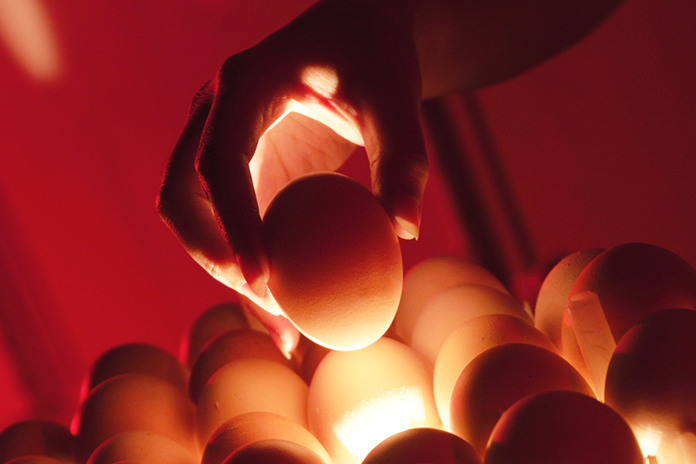
It is well recognized that eggs which have been overheated during incubation do not hatch as well as they would have if incubated under more appropriate conditions. However, there is less information available about the direct impact of high incubation temperatures on the performance of the chicks after they hatch.
Two experiments were conducted at the Aviagen product development center in the USA to investigate the effect of increased eggshell temperature during mid to late incubation on hatchability, chick quality, yolk sac, heart, digestive organs, and broiler performance.
Three treatments were imposed in each experiment. Egg shell temperatures were recorded using Gemini data loggers feeding to a wireless broadcast system that could be interrogated in real time. Incubator conditions were changed as necessary to maintain the desired egg shell temperature. From set to day 10, all the eggs were held at the same eggshell temperature, 100.0°F (37.8°C).
Treatment 1 was the control, and eggshell temperature was set at 100.0°F all the way through to transfer. Treatment 2 was set at 101.5°F (38.1°C) and Treatment 3 at 103.0°F (39.4°C) from day 11 to transfer.
In the first experiment, 2,310 Ross 308 broiler hatching eggs from a 38 week old flock were used in each treatment. The eggs were taken through to hatch, and full hatch data were recorded. Chick quality was evaluated after takeoff and the chicks placed as broilers, reared to 38 days. The treatment of 100.0°F (37.8°C) eggshell temperature throughout incubation period resulted in better hatchability, a higher percentage of first quality chicks, a higher body weight at 38 day, and improved FCR at 38 day when compared to incubation with eggshell temperatures of 101.5°F (38.6°C) or 103.0°F (39.4°C).
In the second trial, 1,815 Ross 308 and 1,815 Ross 708 broiler hatching eggs from a 39 week old flock were placed for each treatment. Full hatch data were collected; chicks were evaluated for chick quality and then placed as broilers, grown through to 53 days. The treatments were the same as in the first trial.
Eggs that were hatched using a 100.0°F (37.8°C) eggshell temperature throughout the incubation period had better hatchability and body weight at 53 day when compared to incubation with eggshell temperatures of 101.5°F (38.6°C) or 103.0°F (39.4°C). The chicks on the control incubation treatment had bigger hearts as a percentage of yolk-free body weight than those incubated on the two hotter treatments.
Chicks that were hatched after a constant 100.0°F (37.8°C) eggshell temperature throughout the incubation period had fewer red hocks, bad navels, lower residual yolk weight, and better liveability at 53 days compared to the high temperature treatments on both Ross 308 and 708.
In both trials, hatchability was as expected when eggs were incubated too hot. Broiler performance was impaired when higher egg shell temperatures were imposed from 11-18 days incubation.
















